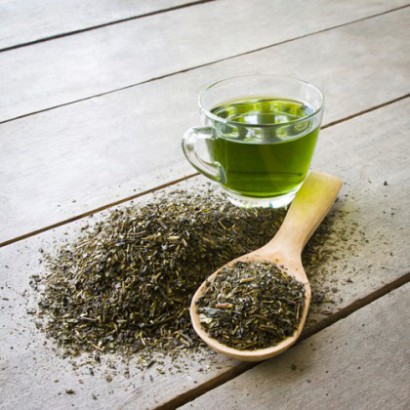What are the health benefits of tea?
mis à jour le 7 October 2015 à 00:02
Good for almost everything, especially in “green” form, tea is a gold mine for our health. Here are our tips for choosing and consuming your tea.
Tea lovers were sipping their cups with satisfied smirks of pleasure when, a dozen years ago, studies commissioned by UN’s Food and Agriculture Organisation (FAO) released scientific evidence proving that their favourite drink was the real elixir of youth. Since then, consumption has continued to increase (3.2 million tonnes in 2004). Black tea still holds 78% of the global market, but, for the record, it is green tea which clinches the Excellence Award.
Why is green tea so valuable for our health?
Due to its richness in polyphenols, including catechins, powerful antioxidants that act on oxidative stress, green tea has anti-inflammatory and hypotensive effects, lowers cholesterol levels and impedes the development of certain cancers whilst protecting our body from damage created by free radicals. Some Japanese green teas contain up to 30% of polyphenols, ten times more than that in black tea. All varieties also contain, at more or less the same levels, of vitamins C, E, fluorine, etc.
First cultivated from a plant originating in China, “Camellia sinensis”, the varieties of green tea were born. However, their colour and properties vary according to the treatment that the leaves undergo: oxidation, drying, baking, etc. While black tea is obtained after fermentation, oxidation of green tea leaves is stopped very quickly with dry heat or steam, as they do in Japan.
“This process has the ability to set the chlorophyll, which causes the tea to develop a very herbal scent,” explains Philippe Cohen-Tanugi, Director of Mariage Frères teas in France. “In other countries, the leaves heated in fire have a softer note,” he says, advising to become familiar with the taste of green tea from Thailand, for example.
For its beneficial effects to work, polyphenols need to be active. However, they only dissolve after four to five minutes, which is the minimum duration for an effective infusion. In addition, brewing tea in too-high temperatures cooks the leaves, thus it is better not boil the water, and instead leave it to infuse in a cup of warm water.
Other teas:
Oolong tea: Produced according to the Chinese method, the leaves are put through a short period of oxidation so that they retain polyphenols. “Known for 1500 years, it is the ideal post-meal drink, as it aids in digestion,” says Philippe Cohen-Tanugi. More tonic than green teas, they also promote the absorption of vitamin C, provided that one consumes it within three hours.”
Pu'er tea: Cultivated in Yunnan in southern China, and originally appreciated by meat lovers for its ability to burn fat, it also has strong digestive properties, but often a disconcerting earthy taste. “This is the only tea that improves with age, as it slowly acquires roundness and sweet notes,” says Philippe Cohen-Tanugi.
Black teas: “I advise Darjeelings, of first harvest if possible. Planters used to fight for labels of the tea’s origin, and there is now the possibility to track exactly where your tea is from, and we can thus be sure of what we are drinking.”
Precautions:
“In the Chinese diet, tea is classified as a “cooling” substance, explains Philippe Sionneau, a specialist in traditional Chinese medicine. Skinny people who are prone feeling cold should thus consume one to two cups per day at maximum. During the hotter days, green or blue (oolong) tea is favoured, whilst black, which is less cooling, favoured for the winter.
Due to the tannins present, tea can also cause headaches. Flavonoids limit the absorption of iron present in plants - an effect that is mitigated if we increase our intake of products rich in vitamin C at the same time. In addition, tea prevents the assimilation of certain proteins. It is thus better to drink outside of mealtimes and during digestion.”
By Martine Azoulai



